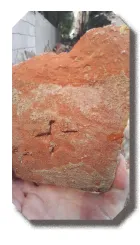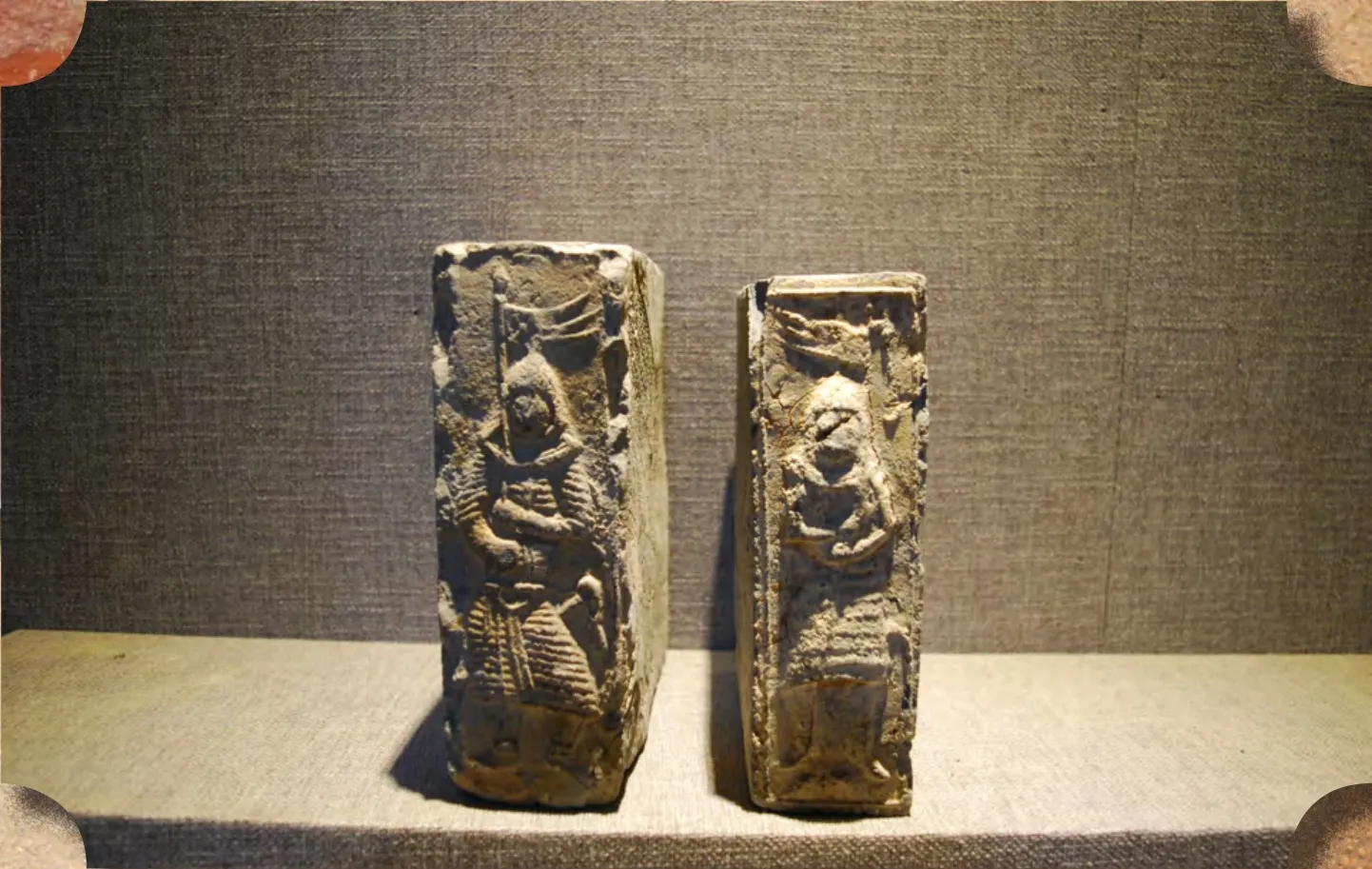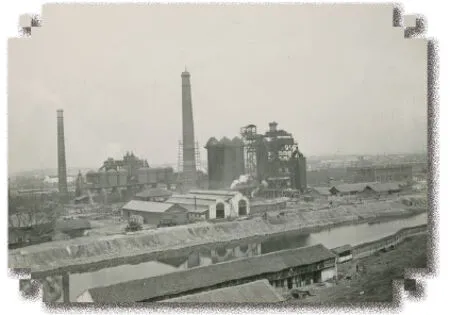Stories Behind a Red Brick
2018-03-13ByLucPauwelsBelgium
By Luc Pauwels [Belgium]
It all started with a red brick that I found on a guided urban walk around the Baotong Temple area in Wuchang. “Red bricks and bricks in general are slowly disappearing from the city scene,” I told a group of eighteen people pointing to some of the remaining redbrick houses.
We turned our backs on Hongshan Hill with the Baotong Temple elegantly draped on its slopes, and walked past the red-brick houses. The street once housed one of the largest and most important factories in Wuhan, the Wuhan Boiler Factory, which had produced industrial boilers since the 1950s. In 2006 the municipal government decided to relocate all large factories like the Boiler Factory to the outskirts of the city.
During my walk, I stuffed my backpack with all the starmarked red bricks I could find, some broken and others intact. They were extremely heavy, which indicated they were of high quality.
I decided to call my friend Mr. Zhang, an expert in urban civilization and director of a museum in Wuhan that specializes in stones and bricks. I was told that the starred red bricks had actually been produced in Wuhan since the end of the 19th century using machines and technology imported from Germany and other Western countries. The bricks, Mr.Zhang told me, were popular with foreign firms, Chinese firms, and rich families,as well as government departments and army divisions.
At home, I studied the bricks more closely. They were non-porous, seemingly impermeable and of a high density—exactly what one would expect of German or Western quality items. The star marks on the bricks had particularly fascinated me with their perfect shapes. I called Mr. Zhang again, this time arranging for a meeting and a visit to his museum.
The Jingchu Epigraph &Rubbing Museum located on Xinhua Road in Jianghan District houses thousands of stones, bricks, and tiles. My visit to the museum started in the Jingchu Epigraph hall,one of its three exhibition halls, with a small selection of exquisitely decorated Panlongcheng pottery items dating back to the Erligang culture period, a 3,500-yearo l d B r o n z e A g e u r b a n civilization.
“The first bricks found and unearthed in Wuhan date back 1,600 years and originate from the Southern and Northern Dynasties (420-589). It was a period of large-scale migrations of Han-Chinese from the north to the lands south of the Yangtze River,”Mr. Zhang explained.
The bricks refer to an emerging civilization in Wuhan and were used in tomb structures, 1600 years ago. They have mainly been found by Mr. Zhang along the Yangtze River bank.The bricks are all delicately decorated with sculpted soldier figures that were believed to provide protection to the deceased in the afterlife.

一切皆始于我在武昌宝通禅寺附近发现的一块红砖。这块刻有星形图案的红砖,承载着武汉锅炉厂、汉阳铁厂和大武汉的过去。它的故事,等待着有缘人来发掘。

Mr. Zhang and I first met at the end of 2016, immediately sharing our passion for Wuhan and Wuhan’s heritage.Coincidentally, both of us had also left former lives behind in‘northern’ Xi’an to establish ourselves in ‘southern’ Wuhan after marrying a Wuhanese local; Mr. Zhang in 1993 and myself in 2003.
“At first I liked Wuhan with its tall buildings, many lakes,and rivers,” Mr. Zhang told me. “Although I soon began missing the rich cultural and historical life I had experienced in Xi’an. Actually,Wuhan is a city of immigrants,traders, and business people with little affinity to the city.”
Growing more and more curious, I asked Mr. Zhang what had made him start collecting stones, bricks, and tiles. “Back in Xi’an I collected old tiles as a hobby,” he responded. “The area around Xi’an was littered with ancient artifacts, you know.” I nodded in response.
“In the late 90s I stumbled on a large lot of old bricks and tiles during a trip to Zhejiang Province. Later it turned out that the bricks and tiles were from the Han and Jin Dynasties. It was overwhelming, and my hobby soon got out of control, to such an extent that I had to stack most of the tiles and bricks under my bed and sofa.”
We joked for a while, me about collecting stamps and dust under my bed, Mr.Zhang about his Han Dynasty bed and Jin Dynasty sofa.“And then you started your museum?” I asked.
“A s a n a c c l a i m e d national ambassador of the intangible cultural heritage of stereoscopic rubbing I was often invited by the Culture Bureau of the Jianghan Government District in Wuhan. When they learned about my vast collection of imperial and local artifacts,they spontaneously offered me a space to exhibit a selection of my personal collection and to open it to the public.”
Inside the museum we moved on, entering another room before stopping at a showcase displaying several bricks. ”Oh! My red bricks!” I shouted out loud.
“Not yet,” Mr. Zhang returned in a teasing tone.“These are the first machinemade bricks made in China, or more precisely Wuhan, at the end of the 19th century.”
A standard for Chinese machine-made bricks was first introduced at the end of the 19th century by Zhang Zhidong in Wuhan. Zhang Zhidong was a Chinese official from the late Qing Government who founded the Hubei Arsenal (or Hanyang Iron Factory) in 1894. To build the factory, the largest industrialized factory of Asia at that time, heat-resistant bricks were needed. Zhang Zhidong found that Western countries like Germany,the UK, and the US had the technology and machines to produce heat-resistant bricks.

汉阳铁厂 Hanyang Iron Factory
The Chinese characters for Government Factory (官厂) imprinted on the bricks indicate that they are the first batch of standardized m a c h i n e-m a d e b r i c k s produced in Wuhan and used in the construction of the Hanyang Iron Factory.
The Hanyang Iron Factory t h e n b e g a n p r o d u c i n g cannons, fire arms, and cartridges, playing an important role in the history of China. In 1911 the Hanyang Iron Factory supplied and supported the revolutionaries in the Wuchang Uprising or Xinhai Revolution. The Wuchang Uprising was the first successful armed rebellion against the ruling Qing Dynasty, which led to its downfall, and thus concluded more than two thousand years of imperial rule in China.
I turned to my friend and asked. “Is that where the name‘Da Wuhan’ comes from?”
Mr. Zhang looked at me suspiciously. “Haven’t I explained this to you before?”Mr. Zhang then told me that in China, only Wuhan and Shanghai are referred to as“Da” (literally meaning ‘big’in Mandarin) and that from the 1930s on “Da” referred to large geographical areas,major trade ports, and cities where Chinese and Western businesses, cultures,hospitals, associations and most interesting to me as an educator, schools, could coexist.
Through the merger of Wuchang, Hankou, and Hanyang in 1927, Wuhan was already considered big, important, and “Da.”Hankou belonged to the group of four major trade centers in China along with Foshan (Guangdong Province), Jingdezhen(Jiangxi Province), and Zhuxian (Henan Province),and few people know that between 1861 and the 1930s,Hankou was the world’s largest international tea market, dubbed “the world’s tea storehouse, ” shipping out millions of kilograms of tea annually to the rest of the world.
“Very Da,” I joked, after he had finished his history lesson. Suddenly, I thought about the schools of that era, Western as well as Chinese, which Mr. Zhang had mentioned in the past. “I really would love to see and visit one of those old school buildings,” I told Mr. Zhang.He smiled broadly and then said that he would take me to Tanhualin area in Wuchang.
“From brick to brick,” I said in a melodious tone.
“From story to story,” my friend continued. “And I’ll introduce you to the man who has fought most of his life to protect Tanhualin from being demolished…” but that’s a story for another time.◆

